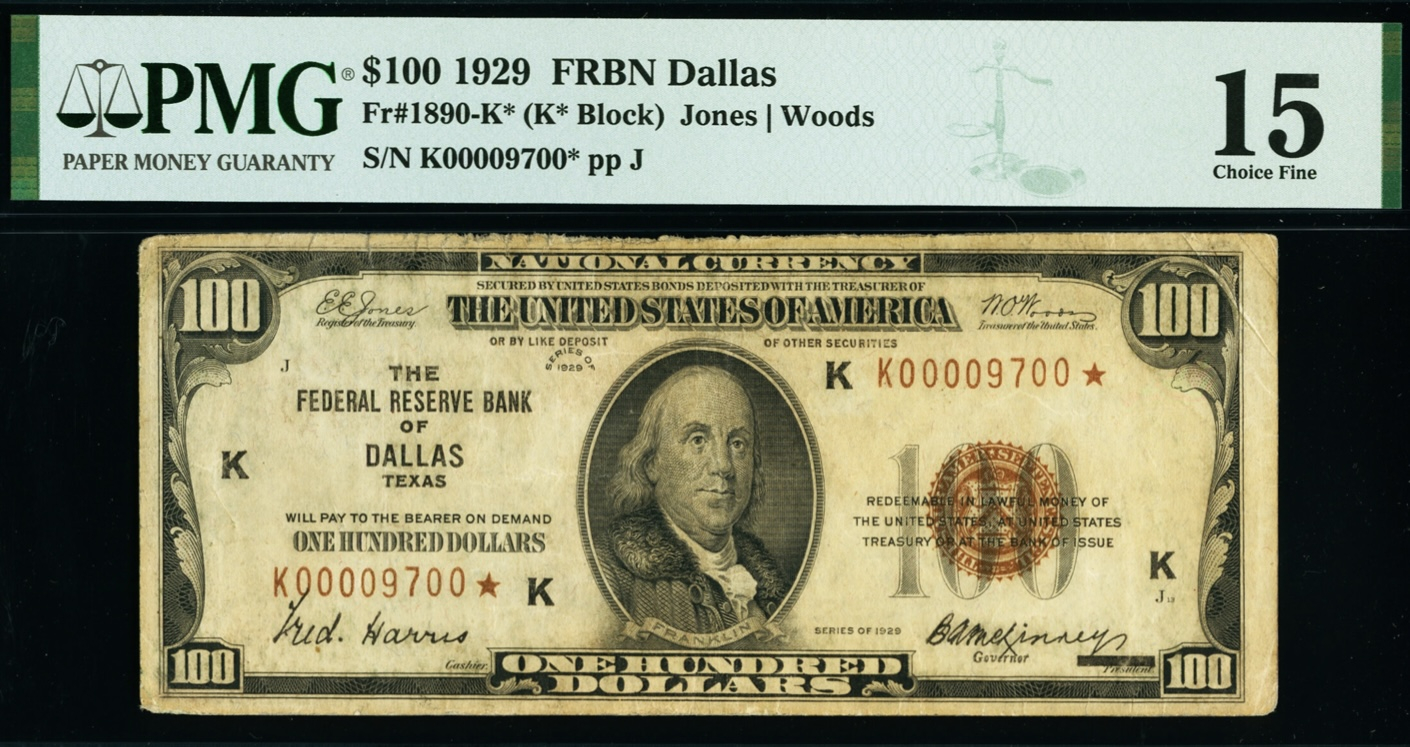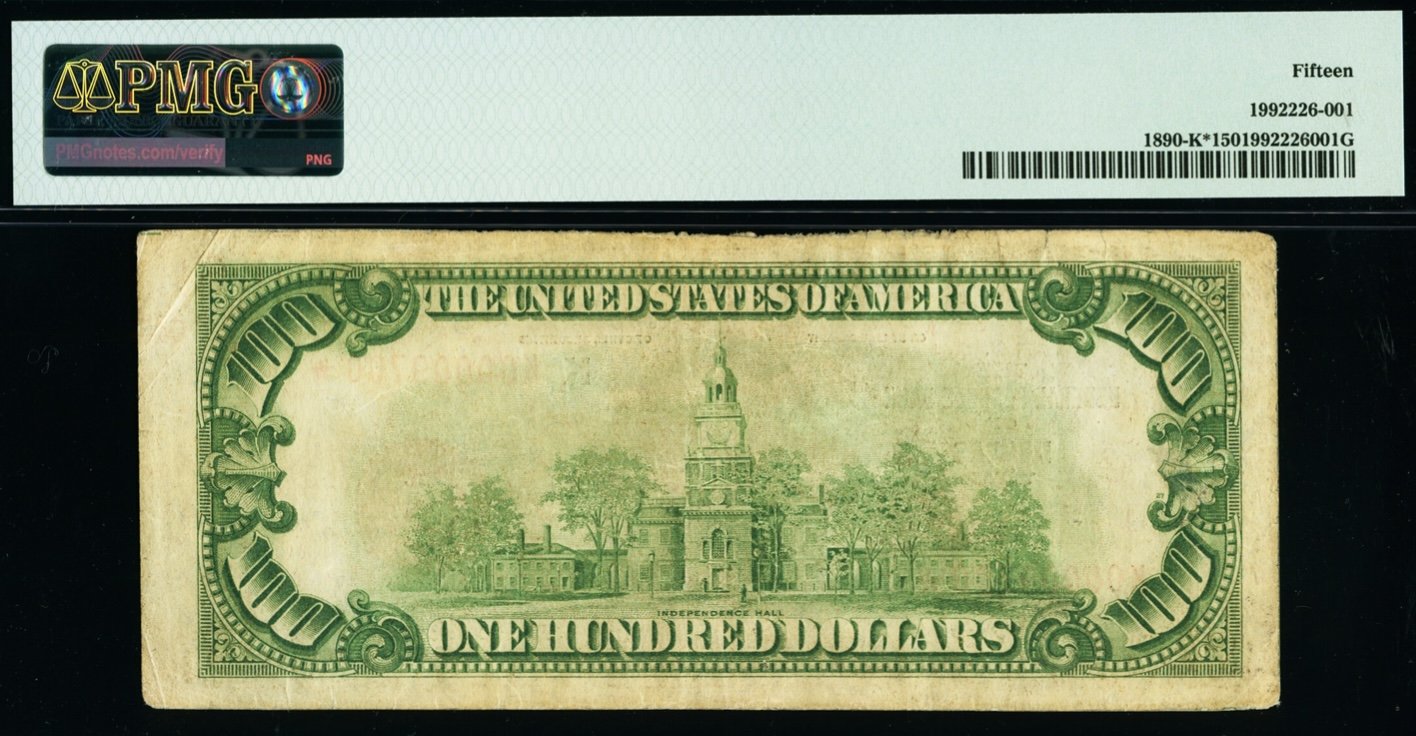Scott Lindquist Email
 Steve_in_Tampa
Posts: 2,032 ✭✭✭✭✭
Steve_in_Tampa
Posts: 2,032 ✭✭✭✭✭
Anyone else receive this email from Scott ? This is part 1 of 2 explaining why Scott Lindquist got involved with the Standard Guide to Small-Size U.S. Paper Money 1928 to Date. It’s long, but we’ll worth the read.
It was the winter of 1999 in the beginning of the year 2000 when I was to discover the gross inadequacies of the Small Size Price Guide for US currency 1928 to-date. A gentleman from Canada who presented himself as a dealer, inquired what I would pay for a 1929, $100 Federal Reserve Bank Note on the Dallas District in a star replacement note. I grabbed my trusty 3rd Edition of this reference where the note was listed, as I recall, in very fine for $1,250.
This gentleman from Canada was no fool and requested I send him, at my expense, a copy of this reference that was trusted in the U.S. small size field. I did so as I was currently a major contributor at the behest of the hobbies fine friend and editor at Krause Publications, Joel T Edler. Once the book was received in Canada some weeks later we did a private treaty deal, dealer to dealer, at approximately $1,350. This note carried serial number 9700 *.
At the very next show I attended, exactly which I do not recall, I stopped and spoke with the venerable David Koble of Mid American Currency out of Bartlesville Oklahoma. Dave was the preeminent small-size specialist in the late eighties and into the 2000’s. I still retain a couple of his finally produced catalogs. I mentioned to this specialist dealer that I have the note described above and his response was striking, something to the effect of ‘The note doesn’t exist, you can’t possibly have it’. I felt like I was being called a liar. When Dave inquired, based on the look on my face, if I actually had the note, which I did in my breast pocket, oh, I said no I had just heard about it and walked away.
I was soon stunned again as I found him to be correct and the note was known amongst the dealer community and the authors of the small size guide as being non-existent or undiscovered. How I reasoned then could a note which was unique be priced
in a price guide at this low level.?! How could it be priced at all if no one had ever seen one? Gobsmacking. Baffling. I will leave it to the reader as to the motivation of price guide authors to put prices in price guides when items are unknown to exist. So I put it in the R. M. Smythe, June 2001 Memphis auction. By then I was an employee of R.M. Smythe and would catalog the John Williams collection in this landmark sale.
“Lot #1856 $100.FRBN.1929*. Unique unreported Star no. K00009700* Fine. When this note was first reported by the consignor, it caused quite a stir in the dealer and collector community. All parties were reticent to put a price on such a unique and desirable item which many wanted but only one could possess. The auction route was the only logical choice the consignor could take in order to avoid pleasing one to the dissatisfaction of others.” Est. $10,000-$20,000.
On the night of the auction, the Canadian gentleman reached me by phone. It was a brief and awkward conversation, where he referred to the note as ours. But I simply stated that the notes ownership was not in doubt, and I had purchased it in good faith. But my Lutheran guilt had been activated. I could understand his distress considering my journey with this item and the esti- mate in the catalog of 10 to $20,000. I explained I had used the best reference trusted within the industry and I certainly could not be faulted if the pricing in this reference was incoherent at best.
Everyone was getting seated and the auction was about to start. Before I knew it Steven Goldsmith had opened the lot and I watched the senior author of the Small Size Guide, Dean Oakes, being quickly outbid at around $10,000 and noticeably chagrined as it quickly surpassed his maximum bid and hammered for $33,000 with the juice.
So I went to work to fix this small size injustice, though I already had started as a special research contributor to this reference. The main motivation over the course of the next dozen years to try and fix this book, which I never did, not completely, came at the expense of the Canadian dealer whose name I cannot remember, but whom I honor here. If this Canadian gentleman had told me he was a collector, I would have paid him half of my proceeds, or $15,000 to settle this wrong. Yet he was a dealer, and since I seemed to unfairly profit to a great degree due to the inadequacies of a price guide that was rarely updated, I strived to repair this necessary hobby vehicle. This was done for the benefit of all in the hobby, whether expert dealer or a neophyte collector.
I searched the Heritage archives and found images of the 1929 $100 Dallas FRBN replacement note, which sold earlier this year for $12,000.


Comments
Scott's insights and experiences ....he should write a "memoir".I was at that Memphis sale and was a bidder for that note (though I wasn't even close to the winning bid).I still have that 2001 catalog...here's the lot from the book.

Putting accurate prices on rarities like this is quite the challenge, especially if the item is being offered for the first time.
I had to estimate 2000 lots of material very much like this when I cataloged the ABN Archives of obsolete notes for Christies in 1990. All the estimate were quite low on purpose to assure that everything would sell but it's quite interesting to see what has happened as these items have more of a price history. Most of it has gone up in value substantially but a few of the rarities have sold for considerably less later, as this star note has.
I'd say that this note is worth more than $1350 and less than $33,000, but of course, if offered now, it COULD sell for more.
Guilt and doing the right thing doesn't belong to any religion. Walter Allen was a Canadian "dealer" and friend of mine but foremost he was a collector and researcher. Perhaps it's because he was a friend that I could never see keeping a windfall profit from him if this was his note and I was in Scott's position.
A valid argument can certainly be made for Scott's actions, as a dealer to whom he owed nothing more than a good faith offer. Scott made his offer in good faith and the owner was free to accept or deny it. But, yeah, this is a tough one, and I'd feel as Scott did-perhaps a bit of guilt or regret, and I'm not Lutheran or religious, just moral.
Fascinating story Steve. And thanks Rob for adding the catalog pic!
I really enjoyed this posting. Thank you. I only started buying currency again after a long hiatus (and having sold almost my entire collection), and I'm finding that people I used to deal with don't seem to be active. Scott Lindquist happens to be one of them, thus my post here. Can anyone bring me up to day with what is happening? I hope he's well, and miss all the great notes he would have up for sale.
Unfortunately, he has retired from the business.